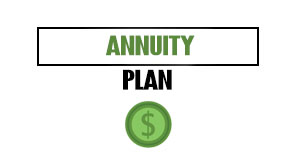I talk to entrepreneurs and professionals in their 30s who lament they’ve “gotten so old” and run out of time to invest and retire at a younger age. Remember that financial planning in your 30s doesn’t have to be worrisome. You don’t need to start investing right out of college, and millions of Americans find their financial footing later than that. Your 30s offer advantages for building wealth, such as higher earning potential and better investment tools. The truth is anyone in their 30s or even 40s can turn their “late” start into a strong financial future.
Table of Contents
ToggleWhy Your 30s Are Perfect to Start Saving
When you’re in your 30s, you’ve likely established yourself professionally and have more years of experience managing your finances than younger folks, even if you haven’t always done a great job.
Financial planning in your 30s typically means peak earning years, with many millennials seeing significant salary jumps. This increased income offers more opportunities to get aggressive about saving and investing.
Unlike prior generations, people in their 30s have technology that backs their efforts to build a nest egg. Here are just a few examples:
- Trading platforms that don’t require commissions
- Automated investment tools
- Quick access to many different investment options
- Up to the moment, educational resources
It’s true that you have fewer years before retirement than those who started earlier, but you still have time on your side. Someone in their mid-thirties has three decades until the typical retirement again and plenty of time for compound interest to do its magic.
It should also be said that people in their 30s have more experience with important financial decisions and understand their spending patterns better. They also have a better idea of their career trajectory and long-term goals than they did in their 20s.
Retirement Catch-Up Strategies
Regarding financial planning in your 30s, specific approaches to retirement savings can be more effective than others. Here are some of the most powerful strategies you can try.
1. Get the Most Out of Your Retirement Accounts
Max out the contributions you can give to your 401(k). In 2025, you’re allowed to contribute up to $23,500. If your employer offers matching, capture every dollar because it’s an immediate 100% return on your investment. You can also open a Roth IRA to add another $7,000 annually in savings, which gives you a tax advantage.
2. Pick Smart Investments that Accelerate Growth
You can afford to be aggressive since you’re only in your 30s, but you should balance that with investments you know you’ll hold for a long time. Look for index funds that don’t cost as much and track major market indices to give you wider market exposure.
3. Automate Everything
Automatically transfer money to your investments the day after each paycheck hits. This “pay yourself first” approach removes emotion from investing and prevents lifestyle creep as your income grows. Schedule automatic increases to your contribution rates to coincide with annual raises if possible.
4. Find Hidden Money
Review your monthly expenses for ways to channel money into your retirement savings. Common places to find extra cash include:
- Refinancing high-interest debt
- Switching insurance companies
- Lowering the number of subscription services
- Negotiating better rates for all of your bills
Redirect this found money to your retirement accounts right away before it gets absorbed into your everyday spending. The amounts may be small but add up significantly over time due to compound growth.
Investment Strategies for Late Starters
If you a late starter in your 30s there are a lot of ways to make the most out of your returns while keeping an eye on risk. Here are four key approaches for millennials who are a little late to the game.
1. Target Sectors with Growth Potential
Pick sectors with sound potential in the long run, like technology, healthcare, and renewable energy. Don’t get caught up in chasing trending stocks, but look for established companies with solid fundamentals and room for growth.
2. Use Tax Advantages Wisely
Go beyond the traditional retirement accounts and leverage tax-efficient investment options. Consider municipal bonds for income that isn’t taxed, HSAs for healthcare savings, and 529 plans if you have children. When you save money on taxes, redirect that money to more investments to make your portfolio grow faster.
3. Build a Modern Portfolio
Your investments should be diverse and reflect the economy of today. Include:
- Traditional stock and bond investments
- Real estate investment trusts (REITs)
- Exposure to international markets
- Alternative investments
4. Balance Risk and Time
The conventional wisdom is that you have to get more conservative with age, but again, it’s ok to be aggressive with investing in your 30s as long as you manage risk. Feel free to have a more significant equity allocation to capture growth potential, but you still want to incorporate defensive positions to protect against market fluctuations.
Your overall strategy will most likely change anyway as your circumstances change. Periodically review your portfolio and rebalance it to make sure it aligns with your goals and changing risk tolerance.
Career and Financial Goal Setting
Your career remains your biggest financial asset in your 30s. Let’s explore four ways to maximize its value for your future.
1. Get Paid What You’re Worth
Most millennials leave money on the table by not negotiating well. Research shows successful salary negotiations in your 30s can add hundreds of thousands of dollars to lifetime earnings. Document your achievements and research market rates and practice making your case for better compensation.
2. Turn Free Time into Extra Money
Look beyond traditional part-time jobs to find high-value uses of your time. Online platforms need professionals for consulting, freelance work, and project management. Focus on opportunities that build on your existing skills rather than starting from scratch.
3. Build Skills That Command Higher Pay
The job market rewards specific, in-demand abilities. Identify skills gaps in your industry where training could lead to significant pay increases. Professional certifications, technical abilities, and management experience often translate directly to higher salaries.
4. Make Job Changes That Matter
Strategic job moves can accelerate the money you make over time. Look for roles that offer substantial raises, better benefits packages, and clear paths to advancement. Give the most attention to companies in expanding fields where stock options or profit sharing could provide even greater opportunities to grow wealth.
How to Manage Debt and Still Build Wealth
Just because you have debt doesn’t mean you can’t keep building your retirement nest egg. Managing your debt the right way can accelerate your financial progress.
A. Prioritize Your Payoff Plan
You don’t need to pay off all debt right away. Put your debt into these categories:
- High-interest credit cards (pay these first)
- Student loans with tax-deductible interest
- Low-interest car loans
- Mortgage debt
B. Build Your Credit Score
Your 30s offer prime opportunities to optimize your credit score so pay every bill on time, keep credit utilization under 30%, and don’t get rid of your oldest accounts. A strong credit score unlocks better interest rates and terms on future investments.
C. Use Debt as a Tool
While avoiding unnecessary debt, certain loans can build wealth. A mortgage on a rental property or a business loan for a promising venture might generate returns that exceed borrowing costs. Always calculate potential returns against interest expenses before taking on new debt.
D. Handle Student Loans Wisely
Every year, you should review the plan you have in place to repay student loans. If you have private loans, consider refinancing them when rates drop. However, weigh carefully before refinancing federal loans because you could lose access to specific repayment plans and potential loan forgiveness programs.
Remember that debt management needs regular attention and that what works today might need changing as your income grows and financial goals evolve.
Creating Multiple Income Streams
Many people in their 30s try to develop a side hustle or additional paycheck to build wealth faster. Here are four ways to create additional income that grows over time.
A. Automate Your Extra Earnings
Digital platforms now offer multiple ways to earn without constant attention. Consider revenue-generating opportunities through:
- Content creation and digital products
- Online course development
- Affiliate marketing
- App or website advertising
B. Put Your Money to Work
Start with dividend-paying stocks or funds that align with your investment strategy. Reinvest these dividends automatically to accelerate your wealth-building through compound growth.
C. Start Small, Think Big
Launch a business that takes advantage of your skill set and time available. Many successful millennial entrepreneurs began with simple service businesses that could manage outside work hours and then scaled up gradually.
D. Begin Your Real Estate Journey
Some of the smartest colleagues I know tried “house hacking” — where you live in one unit while renting out others — as an entry point to real estate investing. This approach helps offset living expenses while building equity in a valuable asset.
It’s best to start with one additional income stream and master that before trying to add others.
Action Plan for Late Start Investing
If you break down your financial journey into manageable steps, the process won’t feel as overwhelming. Here’s a road map:
First 6 Months: Build Your Foundation
Start with three key actions:
- Calculate your net worth
- Establish an emergency fund
- Maximize your employer’s retirement match
Set up automatic transfers for savings and begin tracking your spending habits carefully.
Year One: Accelerate Your Progress
Increase your retirement contributions by 1% every three months, and start investing beyond your workplace retirement plan. Research and select a mix of low-cost index funds that match your risk tolerance.
Five-Year Milestones
Aim to save 20% of your income for retirement, build multiple income streams, and reduce high-interest debt.
Long-Term Strategy
It’s better to be consistent than go for flashy trends. Keep building your investment knowledge through:
- Regular reviews of your funds
- Assessment of goals each year
- Adjustments based on life changes
- Professional guidance when needed
Wealth growth occurs when one makes steady progress over time, not when one makes dramatic financial moves.
Your Best Moves Are Still Ahead
Don’t despair — You can argue that your 30s are one of the best times to begin saving for retirement because of your experience, earning potential, and access to more tools than any other generation has had. Your timeline might be a bit shorter, but your path to financial security is not hard to follow.
Take action today by implementing one strategy at a time, and always remember that staying consistent is more important than getting the timing exactly right. Even if it might not feel optimal right now, your best financial moves still lie ahead.
















